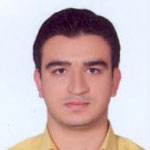
Seyed Reza Hashemi
Azad University, Iran
Title: Hardware-in-the-loop simulation of a jet engine fuel control unit Using LabView
Biography
Biography: Seyed Reza Hashemi
Abstract
Hardware-in-the-loop (HIL) is a type of real-time simulation test that is different from a pure real-time simulation test due to a real component added to the loop. Through applying the HIL technique, a component of a system can be tested physically in almost real conditions. Not only can this test save time and cost, but also there remain no concerns about the test safety. The tested component is often an electronic control unit (ECU), since most dynamic systems, especially in aerospace and the automobile industry,have a main controller (ECU). Sometimes, HIL is an area of interest for evaluating the performance of other mechanical components in a system. Since HIL includes numerical and physical components, a transfer system is required to link these parts. The transfer system typically consists of a set of actuators and sensors. In order to get accurate test results, the transfer system dynamic effects need to be mitigated. The fuel control unit (FCU) is an electro-hydraulic component of the fuel control system in gas turbine engines. Investigation of FCU performance through HIL technique requires the numerical model of other related parts, such as the jet engine and the designed electronic control unit. In addition, a transfer system is employed to link the FCU hardware and the numerical model. The objective of this study was to implement the HIL simulation of the FCU using LabView and MATLAB. To get accurate simulation results, the inverse and polynomial compensation techniques were proposed to compensate time delays resulting from inherent dynamics of the transfer system. Finally, the results obtained by applying both of the methods were compared.
